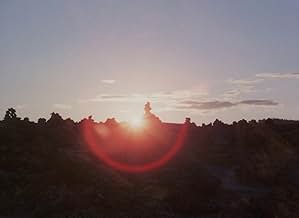IMDb-BEWERTUNG
7,7/10
2659
IHRE BEWERTUNG
Die Coming-of-Age-Geschichte eines kleinen Jungen, die in einem seltsamen, karnevalesken Dorf spielt, wird zur Nachbildung einer Erinnerung, die der Regisseur zwanzig Jahre später hat.Die Coming-of-Age-Geschichte eines kleinen Jungen, die in einem seltsamen, karnevalesken Dorf spielt, wird zur Nachbildung einer Erinnerung, die der Regisseur zwanzig Jahre später hat.Die Coming-of-Age-Geschichte eines kleinen Jungen, die in einem seltsamen, karnevalesken Dorf spielt, wird zur Nachbildung einer Erinnerung, die der Regisseur zwanzig Jahre später hat.
- Auszeichnungen
- 1 Gewinn & 2 Nominierungen insgesamt
Masahiro Saito
- Longsocks
- (as Masaharu Saitô)
Yôko Ran
- The Hunchbacked Girl
- (as Yoko Ran)
Izumi Hara
- Phantom of old woman
- (as Sen Hara)
Empfohlene Bewertungen
This is one of the best surreal film ever made right along Alejandro Jodorowsky's "Fando and Lis", Frank Zappa's "200 Motels", and Wojciech Has's "The Saragossa Manuscript." The film is based on Terayama's original play and series of his haiku about his childhood (IMDb's biography on Terayama is excellent and will give you in-depth view of Terayama's art.) The film has timeless Freudian theme about the adolescent trauma, loss of innocence, and deconstruction of self and memories. I have a Japanese VHS copy and watched with my American friends. I tried to translate dialogue as much as possible, it is very hard to keep up with the pace of film and especially his haiku are very hard to translate. However, even with my poor translation, my friends loved the film. I still think in order to understand Terayama's intention of the film, it is important to appreciate his haiku.
I was wondering how I could get a copy with English subtitle. I want to share the film with American friends. If you have seen this film in the U.S., let me know where you have seen it.
I was wondering how I could get a copy with English subtitle. I want to share the film with American friends. If you have seen this film in the U.S., let me know where you have seen it.
Terayama's mastery of the image is inarguable. His compositions - kaleidoscopic, supersaturated, overpowering - are an integral part of his films' unique emotional landscape. He could almost be described as a director of Japanese kink, were his films not so deeply philosophical, cerebral and achingly emotional.
Here, Terayama paints his childhood in broad strokes, then proceeds to shake his head as if disappointed at the results; his images are an embellishment, he concedes, and the rest of the film delves more deeply into the metaphysical as he literally steps foot into his childhood to try to understand it and, if possible, change it, if only to find out what will happen if he does.
The film is charged with budding eroticism, a portrait of an adolescent's confusion juxtaposed with a man's midlife existentialism. Terayama was a fascinating man and he's putting his soul on display in this film, his own poetry woven through it as his memories ring with the surreal and come across more coherently as feelings than as literal moments. The figures of his childhood walk larger than life until, finally, the thin walls of memory come crashing down and the past is forsaken in favour of an urban present.
Here, Terayama paints his childhood in broad strokes, then proceeds to shake his head as if disappointed at the results; his images are an embellishment, he concedes, and the rest of the film delves more deeply into the metaphysical as he literally steps foot into his childhood to try to understand it and, if possible, change it, if only to find out what will happen if he does.
The film is charged with budding eroticism, a portrait of an adolescent's confusion juxtaposed with a man's midlife existentialism. Terayama was a fascinating man and he's putting his soul on display in this film, his own poetry woven through it as his memories ring with the surreal and come across more coherently as feelings than as literal moments. The figures of his childhood walk larger than life until, finally, the thin walls of memory come crashing down and the past is forsaken in favour of an urban present.
In what may or may not be an auto-biography, Terayama explores his past and the relationship we have with our memories, in a grotesque serie of poetic symbolism, bizarre surrealism, haikus, tragic tales of love and innocence, beautiful scenery and interesting cinematography, all wrapped in a self-referential, intellectually thought-provoking exploration of how our lives are affected by our childhood memories. A magnificent balance between indulgent surrealism and thoughtful objectivism, while still not being really experimental.
Not only surrealism but in general the overall balance of the film and the absurdity of the cinematography made all so natural, made the film what it is. So ahead of its time a simple treasure for the film community.
Mesmerizing and stunning in every possible way.. A Masterpiece, folks.
One of the greatest cinematic experiences i've ever had.
Wusstest du schon
- WissenswertesThis film was one point included in the Official Top 250 Narrative Feature Films on Letterboxd.
- VerbindungenReferenced in Ore 5.35. tangenziale est (2008)
Top-Auswahl
Melde dich zum Bewerten an und greife auf die Watchlist für personalisierte Empfehlungen zu.
Details
- Laufzeit1 Stunde 44 Minuten
- Sound-Mix
- Seitenverhältnis
- 1.37 : 1
Zu dieser Seite beitragen
Bearbeitung vorschlagen oder fehlenden Inhalt hinzufügen

Oberste Lücke
What is the Mexican Spanish language plot outline for Pastoral: To Die in the Country (1974)?
Antwort






















